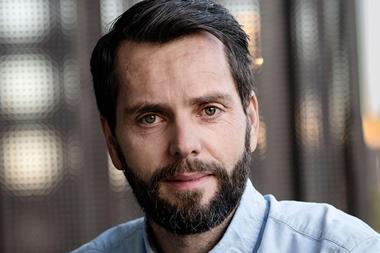Danish labour-market pension provider Sampension is hard at work adjusting its portfolio both tactically and strategically at a time when markets have delivered one of the most sustained declines seen for some time.
Henrik Olejasz Larsen, chief investment officer at the Copenhagen-based pensions firm, told IPE: “This market downturn is unusual as it comes in an economic environment when total demand is very strong – in fact so strong that we have capacity constraints and very low unemployment.”
There would be no 1970s-style stagflation this year, he said, even if there was low growth and high inflation for the next few months.
“Because at least for the next quarters we will have very high employment rates, and companies will on average be able to maintain high profit margins due to the capacity constraints,” the Danish CIO said.
At the end of June, the S&P 500 closed the book on its steepest first-half slide since 1970, according to Reuters.
Asked whether Sampension was employing particular tactics to boost returns in such an environment, or avoid further losses in the rest of this year, Olejasz Larsen said that on the margin, the investment team was trying to take advantage of what they saw as mispricing or dislocation.
“And considering the increase in implicit pricing of volatility we have taken more risk in low-risk, less liquid fixed income,” he added.
“We also rebalance between major asset classes systematically, which keep risks in balance, and earn an extra return when relative prices normalise,” he said.
In terms of strategy or tactics as a result of the higher-than expected inflation figures seen this year, the Sampension CIO said that from the start of the year, the pension fund had had increased the benchmark allocation to European inflation-linked bonds reducing the allocation to nominal bonds.
“Also, we have gradually over many years built a portfolio of real assets, including real estate, forestry, and infrastructure, which we expect to give some inflation protection, especially because our investments are typically held long term and unleveraged,” he said.
“We will continue to build our portfolio in these asset classes,” he added.
Sampension is also continuing to be overweight in value stocks, according to the CIO.
“Typically therefore also overweighting the kind of companies that benefit from the capacity constraints and – at least on a relative basis – from higher interest rates,” he said.
However, more generally, he said that equity valuations now seemed to be at a level that could be productive for good returns over the next years – even if there was likely to be more volatility in the next few months.
Olejasz Larsen said he thought that though not very likely, it was still possible that markets could still return in the rest of 2022 to the price levels seen at the start of this year.
The reason he considered such a recovery possible, the CIO said, was partly the high volatility, and also because there would probably be sustained uncertainty about the path of inflation and its effect on real consumer demand for at least the next six months.
As to the expected impact of inflation on Sampension as a pension provider, Olejasz Larsen said: “This is going to be a marked reduction in the purchasing power of the pensions that we already pay out or – when compared to recent expectations – are starting in the coming year.
“It should, however, also been seen against the backdrop of more than ten years of low inflation and higher-than-expected returns,” he added.
Sampension had total assets of DKK305.4bn (€41.04bn) at the end of 2021, but has since reported negative returns at the first quarter stage.
Read the digital edition of IPE’s latest magazine


















No comments yet